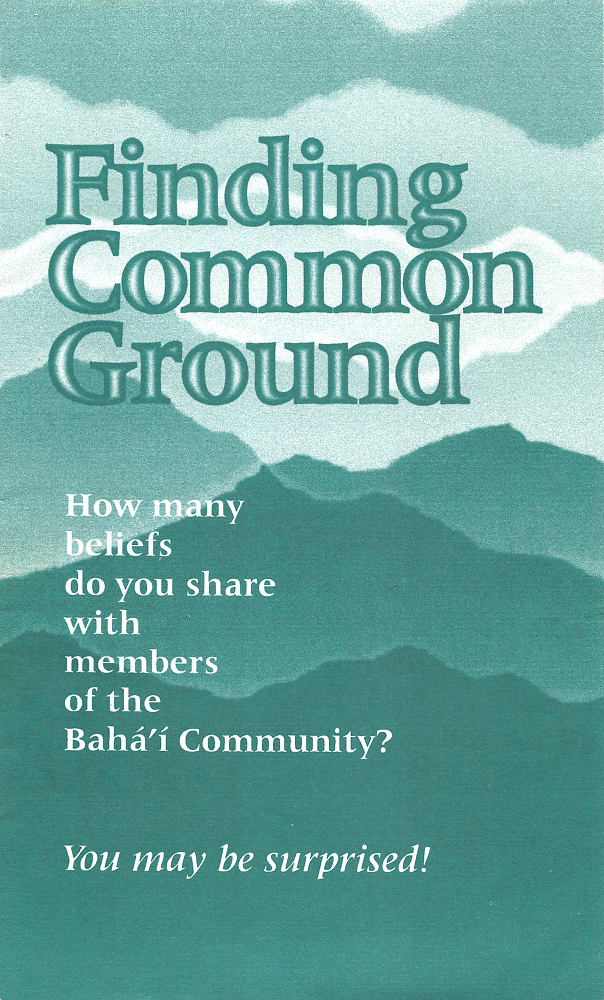In the complex landscape of contemporary spirituality, the conjunction of Bahá’í teachings and Unitarian principles offers fertile ground for dialogue and mutual understanding. Both traditions, though distinct, espouse values that resonate deeply with the fabric of contemporary society’s quest for unity. While the path diverges in various theological assertions, a shared commitment to the inherent dignity of every individual and a profound yearning for social justice form the bedrock for potential collaboration.
The Bahá’í Faith propounds the concept of oneness—the idea that humanity is a single family regardless of race, religion, or nationality. This ethos serves as a prismless window through which one can view the interconnectedness of all beings. Similarly, Unitarianism underscores the intrinsic worth of every person, advocating for a pluralistic approach to spirituality that respects diverse beliefs. This mutual recognition of individual value propels both traditions toward cooperative engagement in the myriad challenges faced by society today.
At the heart of Bahá’í teaching lies the belief that religious revelation is an evolutionary process. This tenet reverberates with Unitarian perspectives that embrace the idea of religious development as a continuum rather than a defined endpoint. The metaphorical image of a river, flowing through the epochs of human history, illustrates this concept well. As the river carves its path, it gathers tributaries—each contributing diverse insights, experiences, and interpretations that enrich the overall landscape. In this metaphor, Bahá’u’lláh, the founder of the Bahá’í Faith, embodies a pivotal tributary, enhancing the unity of thought while maintaining distinctiveness.
Both traditions advocate for a progressive vision of society grounded in principles of equality and justice. The Bahá’í teachings emphasize the elimination of prejudice and the establishment of harmony among peoples, urging adherents to act as instruments of peace. Unitarianism complements this by calling for social action that is inclusive and compassionate. This shared commitment to societal transformation provides a scaffold upon which collaborative initiatives can be built, addressing pressing issues such as poverty, education, and environmental stewardship.
In contemplating the intersection of Bahá’í teachings and Unitarian principles, one might consider the analogy of a garden—a vibrant ecosystem where diverse plants flourish together, each contributing to the ecological balance. Such a garden represents the ideal interfaith collaboration where Bahá’ís and Unitarians cultivate a space for ethical discourse and cooperative activism. It’s within this garden that individuals can plant seeds of understanding, nurturing them into branches of shared initiatives that address societal needs.
The willingness to engage in meaningful dialogue is essential in forging connections between these two faith communities. This is perhaps where the metaphor of a bridge becomes salient. A bridge, connecting two lands, facilitates the exchange of ideas and beliefs. In constructing this bridge between Bahá’í and Unitarian perspectives, dialogue must be sincere and intentional, characterized by active listening and a readiness to transcend doctrinal differences. By recognizing the commonalities in their goals, both communities can embark on a collaborative journey toward social betterment.
Moreover, education serves as a cornerstone for fostering deeper relationships and understanding. Bahá’í teachings encourage the pursuit of knowledge as a fundamental virtue, aligning remarkably well with Unitarian values of intellectual exploration. Workshops, seminars, and interfaith dialogues can be instrumental in dispelling misconceptions and building rapport. Engaging youth and encouraging their involvement in these discussions can yield multiplicative effects on community cohesion as the next generation imbibes the spirit of cooperation.
As society grapples with division and polarization, the example set by both Bahá’ís and Unitarians stands as a testament to the power of collaboration in addressing communal challenges. Acknowledging the beauty of diversity plays a critical role in this endeavor. Both faiths honor the myriad paths people traverse in their spiritual journeys, culminating in a tapestry rich with varied colors and textures. The profound respect for diverse religious expressions allows both communities to work side by side, tackling socio-economic disparities and fostering peace.
In conclusion, the simultaneous yet distinct paths of Bahá’ís and Unitarians reveal that, while doctrinal divergences may exist, there is an overarching call for unity that resonates through shared values. By leveraging the metaphor of a river and the imagery of a garden, one can appreciate the unique appeal of collaborative engagement rooted in mutual respect. The commitment to fostering peace, justice, and social harmony opens a conduit through which both traditions can navigate the complexities of life together, cultivating a flourishing community that honors the sacredness of the human experience. Through concerted action and unwavering dedication to their respective ideals, Bahá’ís and Unitarians can indeed find common ground amidst the vast expanse of their spiritual landscapes.
